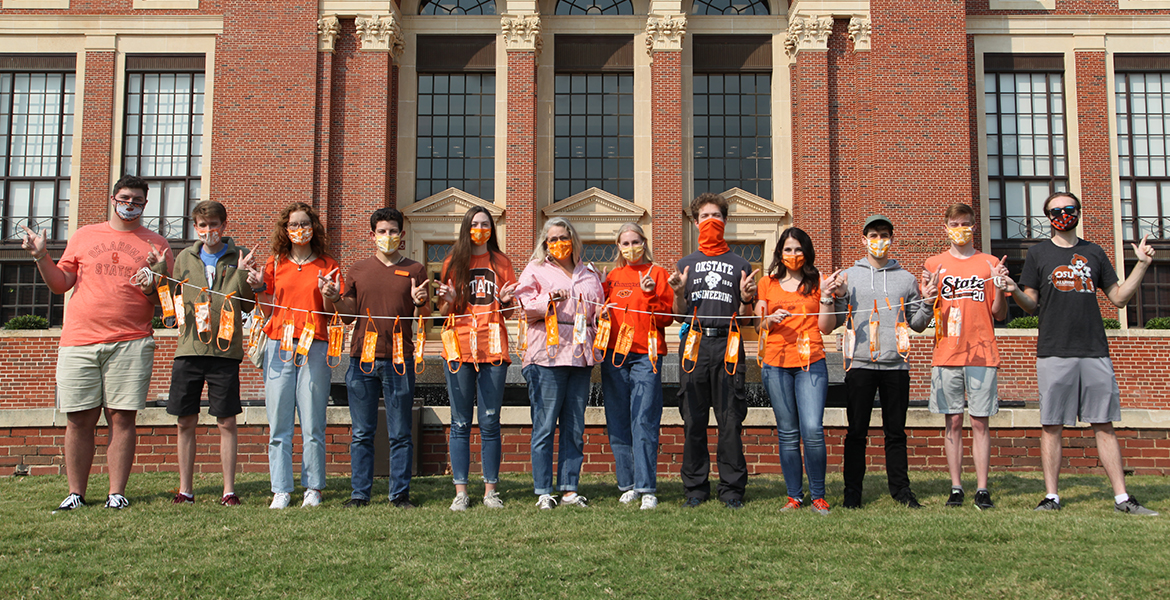
CEAT Scholars make and donate masks
Tuesday, October 20, 2020
Oklahoma State University’s College of Engineering, Architecture, and Technology Scholars tye-dyed masks for the Boys and Girls Club on August 29 and September 5.
CEAT Scholars is a program about expanding a student’s life experience with pushes to learn about the arts and opportunities to study abroad to get a better world view. These scholars are selected through a screening and interview process and have a set of requirements in order to stay in the program.
Julie Tikalsky, head of the program, explains the activity was part of a retreat the Scholars usually have, however, due to COVID-19, social distancing and other measures had to be taken to ensure their safety. “In the current situation of the COVID-19 pandemic, we thought a dual service project to self and immediate community and to a wider community would be a good idea,” Tikalsky said. “CEAT has worked with the Boys & Girls Clubs over the years, and in recent years has done engineering camps/classes for Boys & Girls Clubs in Tulsa and around the state.”
CEAT Scholars made over 100 masks in total. Each member made their own mask, and at least one for the Boys and Girls Club. Along with donating 100 masks, they are also donating 100 orange clothespins either for the club to hang the masks, or to send home with the children to remind them to wear their mask.
Ethan Biedenstein, a member of CEAT Scholars, explains his inspiration to participate in this activity was because not everyone can afford to buy masks to stay safe during COVID-19. Biedenstein hopes to impact the children in the Boys and Girls Club by giving them peace of mind for both their health and the health of those around them.
Masks were dyed using a Japanese style of dye, instead of traditional dye. “The activity served a few purposes,” Tikalsky said. “A culture component, when I taught the scholars about Japanese Shibori dye techniques, which involves folding, binding, or fixing items into the fabric to resist dye uptake; a service component, as they each made a mask to wear themselves, as well as at least one mask to donate; a smaller group informal ice breaker activity as they were in groups of five or less at the work table, and a chance for fun and creativity.”
Both Tikalsky and Biedenstein hope the donation has kept the children of the Boys and Girls club safe during COVID-19.
MEDIA CONTACT: Kaitlyn Mires | CEAT Marketing | kamires@ostatemail.okstate.edu
